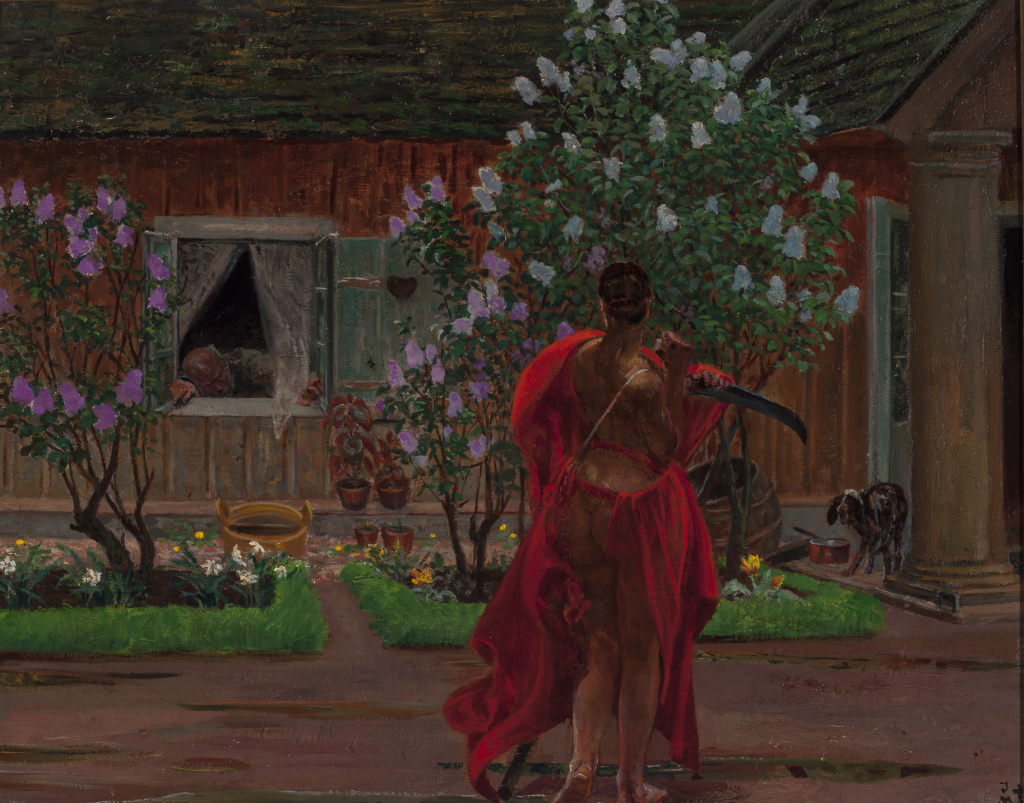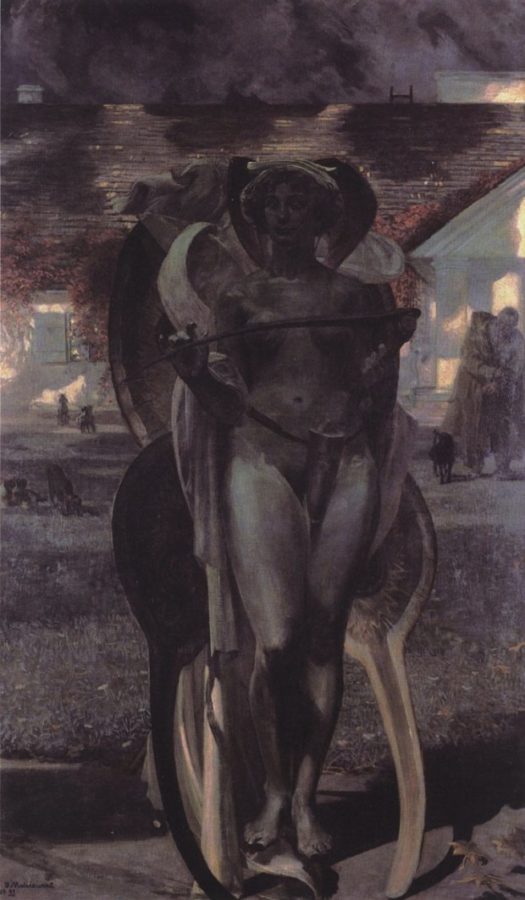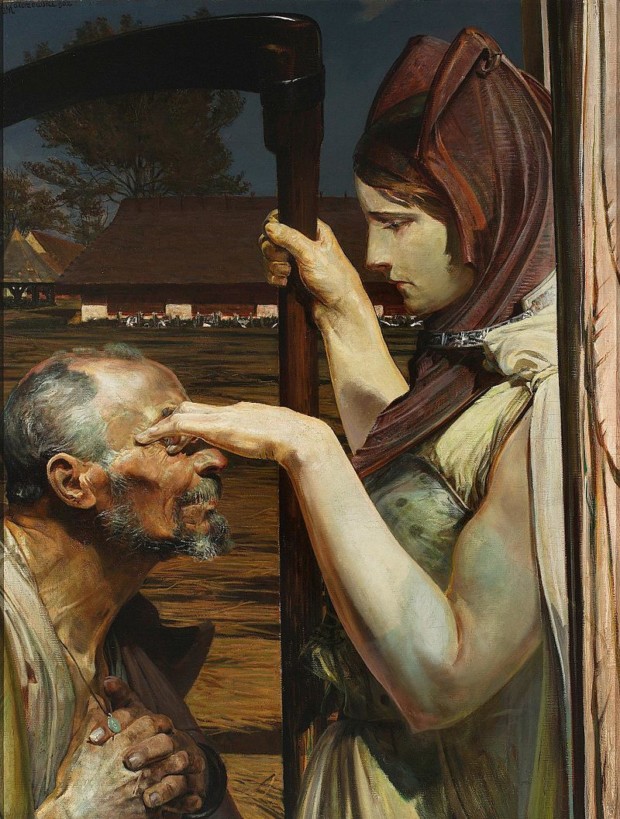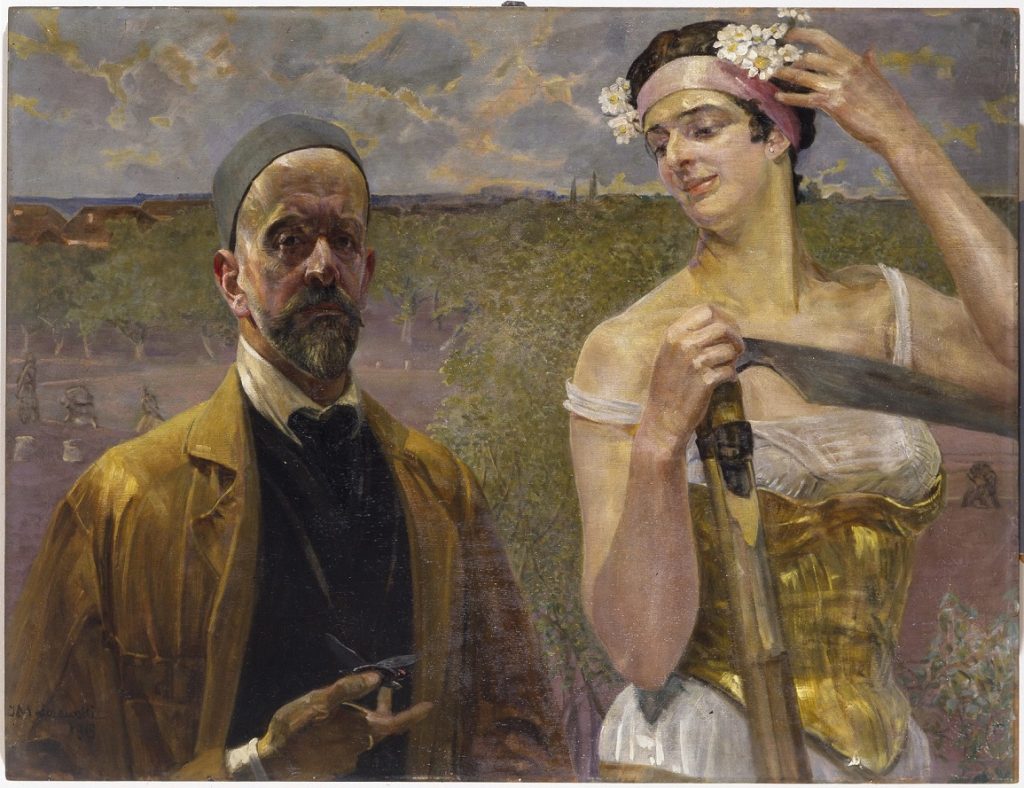5 Guises of Maurice Denis
Maurice Denis was a French Symbolist painter, known as a prominent member of the Nabis. His work was influenced by the art of the Renaissance,...
Valeria Kumekina 25 November 2024
Jacek Malczewski is one of the most important Polish symbolist painters. Malczewski is associated with the Young Poland movement (Młoda Polska), a modernist period in Polish culture following more than a century of Partitions of Poland. Therefore Polish martyrdom, romantic ideas of independence, local folklore, and death were recurrent motifs in Malczewski’s oeuvre. Today, we present you with a selection of the most famous representations of death by Jacek Malczewski.

In the years of fin-de-siecle, death was a popular subject of conversations, books, and paintings. Europeans feared the new century – they did not know what it would bring, and some expected the end of the world. Malczewski, as a legit Symbolist, could not have done anything other than select this subject as a leading theme for the cycle of his works. However, he stepped away from the traditional depiction of death, and he turned instead to the Greek mythology where death, Thanatos, was a god brother of the dream, Hypnos.

However, Malczewski chose to depict Thanatos as a woman, as it often happened in Symbolism (woman as femme fatale, woman as a virtue, etc.). Look at her: the naked curves of her body are sinuously paralleled by the curves of the wings. The pouch she’s wearing at her waist leads our eyes to her vulva. In her hands, she’s holding a scythe, her eternal symbol.

By depicting death as a fertile woman, Malczewski reverted the typical rhetoric: according to him, death is not the end but just the beginning of a new life. By setting her in this dreamy environment, Malczewski wanted to draw on the close relationship between death and dream, Thanatos and Hypnos. Is our life just a dream, and death brings, to us, the awakening?

This hopeful message certainly bears some religious undertones. Look at this old man: he seems to be ready to die, his head turned towards death and his neck tense. His hands clutched in prayer, his fingers fiddling with a small medallion with Virgin Mary, something that many Polish Catholics wear even today.
Death looks almost like a Greek goddess. However, it’s difficult to understand her facial expression: is she feeling pity for this old man? Or is she just focused on doing her job?

Have you seen a sweeter smile of death? She’s so feminine here, wearing a corset and playing with the flowers in her hair. Malczewski instead is very serious, his gaze challenging the viewer. The two figures are detached from one another as if each of them belonged to another world. Malczewski seems to be saying: it’s not my time to leave yet. It’s true – he would die over 25 years later, in 1929.
DailyArt Magazine needs your support. Every contribution, however big or small, is very valuable for our future. Thanks to it, we will be able to sustain and grow the Magazine. Thank you for your help!